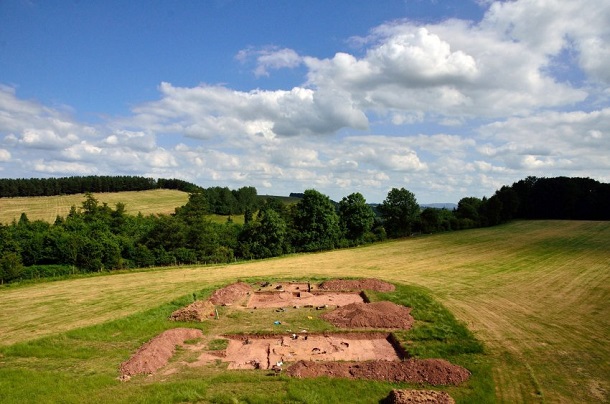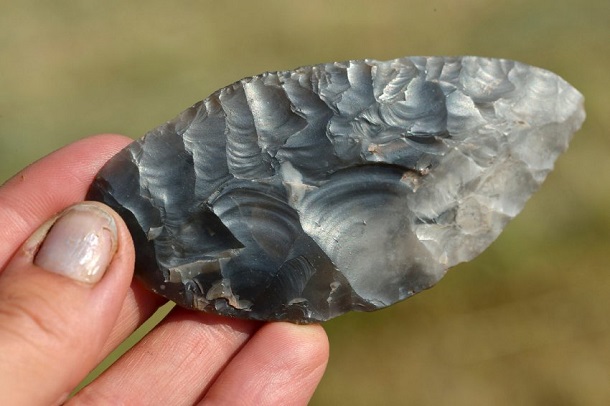Traces of a spectacular event: In the English Dorstone Hill, archaeologists found the remains of a large wooden hall. She served as the House of the Dead Stone Age farmers.
It must have been a huge fire that blazed on the Dorstone Hill around 6000 years ago. “If a timber hall catches fire, burns the first thatched roof,” explains Julian Thomas of the University of Manchester. After that first catch the thinner beam fire. The thick supporting beams but usually do not get into fire, says Julian Thomas: “You carbons only to himself – that could be detected with the aid of experimental archeology.”
Therefore, the researchers were quite astonished as they burned the remains of a wooden hall examined in more detail in the English county of Herefordshire on the Dorstone Hill near the village of Peter Church. Even the thick beam were burned to the ground. “To destroy a wooden hall way associated expense is a necessary,” says Thomas. “The fire must burn for days and are constantly receiving new herbeigeschafftem with fuel alive. Someone must have lain very keen thoroughly burn down this hall.”
History Of England:Many small chambers inside
When she was completely in ruins, built to a grave hill overlooking the ruins, proud 70 meters long and 30 meters wide. It is the first find of its kind in the Great Britain. Although elongated grave mound of similar magnitude are known, but not with a burnt hall inside.
But the building of unusually many details have been preserved. The burnt wood beams, post holes, where once stood the supporting beams, and even the remains of smaller rods. Between them lay a thick layer of hard-baked clay – the remains of the walls. From the traces Thomas could reconstruct the structure of the hall: your heart was not clear, but divided into many small chambers that branch off from long corridors.
There were no bones in the earth, but can also be passed without a trace either in the fire or in the intervening millennia. Probably the early Neolithic farmers brought sometime in the period 4000-3600 BC their dead here. How many families or communities used the hall, it is difficult to estimate. “Probably it was about a generation as House of the Dead, ‘suggests Thomas.
History Of England:Combustion as powerful symbolism
Then they left the hall rise in flames. But why they burned the building? “As an act of complete destruction is the symbolic reversal of the structure,” says Thomas. What has been constructed, deconstructed is now – what has been given, is taken.
Even more: “The fire was a deliberate action: thus, they created a special event,” says Thomas. The flames blazed high in the sky, the fire must have been seen for many miles. “With this powerful symbolism they created an impression, to which the audience would remember.”
The findings provide the archaeologist right. A thousand years later, in the late Neolithic, Dorstone Hill was still a sacred place. The excavators found more burials and a pit with two stone tools. The ax and the fine knife of flint, however, do not seem to come from the region but from the more than 300 kilometers away in eastern Yorkshire – a huge range in the Neolithic.
History Of England:”The discovery of my life”
How came ax and knife to Herefordshire? It is possible that they went as merchandise by hand to hand. However, the excavators suggest rather that they were deliberately brought from Yorkshire to the Dorstone Hill, “as part of a ceremony or a pilgrimage to the ancestors.” Over 5000 years ago, they suspect existed between the two regions close family ties.
Immediately adjacent to the hall burned the excavators discovered another grave mound. He was much smaller than its neighbor, but also in its interior was a seven by 2.5 meters wide wooden grave chamber. “Dorstone Hill shows a direct connection between the house and grave, which is stronger than all previous excavations,” says Thomas. The dead were built houses, which should resemble those of the living. “Early Neolithic halls are inherently rare, but to have discovered one of them under a grave mound, is the discovery of my life.”
[adrotate banner=”54″]



